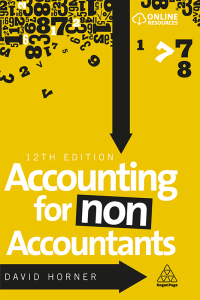The Scenario: When the day begins, Joshua has $116 in his checking account, and he has overdraft protection Before school he buys his cousin a round trip bus fare for $4 using his debit card He then uses the card to get gas in his car for $43 Once the banks open, a check he gave the school for his senior yearbook clears, and S75 comes out of his account Joshua's Netflix account subscription is automatically debited today, too, so another $10 leaves the account After school he heads out with friends and uses his debit card to buy a $3 coffee He sends a person-to-person payment of $13 to his friend Bryant for his share of dinner Finally, he finishes out the day with some shopping to buy new soceer gear for $35 using his debit card at the store 1. Open the link in a new tab: the current overdraft fees in NerdWallet's Overdraft Fees by Bank 2. Using the information provided by NerdWallet, determine how much Joshua would pay in overdraft fees at the following banks: Alliant Credit Union: SO Ally Bank: $0 Citibank: 834 Fifth Third Bank: 37 Sun Trust: 836 Wells Fargo: $35 Part 2: Compare the Fees 1. How much did Joshua spend on actual purchases throughout the course of the day? 2. Without fees, what was his ending balance at the day's end? 3. How much did he pay in overdraft fees with each bank? How Much Jeskus Would Pay in Overdraft Fees Alliant Credit Un Ally Rank Chunk Fifth Third Bank Sus Trust Wells Farya 4. What advice would you give to Joshua? Part 3: Analyze the Bigger Picture 5. Why do you think the banks have such widely varying policies on overdraft fees? 6. After seeing the range of results in Question 4 above, why would anyone select a bank that has unfavorable overdraft policies? 7. If you were selecting a checking account and reviewing account agreements to see which is the best fit for you, which factor matters more -- the size of the overdraft fee or the maximum number of overdraft fees charged per day? Explain your thinking. The Scenario: When the day begins, Joshua has $116 in his checking account, and he has overdraft protection Before school he buys his cousin a round trip bus fare for $4 using his debit card He then uses the card to get gas in his car for $43 Once the banks open, a check he gave the school for his senior yearbook clears, and S75 comes out of his account Joshua's Netflix account subscription is automatically debited today, too, so another $10 leaves the account After school he heads out with friends and uses his debit card to buy a $3 coffee He sends a person-to-person payment of $13 to his friend Bryant for his share of dinner Finally, he finishes out the day with some shopping to buy new soceer gear for $35 using his debit card at the store 1. Open the link in a new tab: the current overdraft fees in NerdWallet's Overdraft Fees by Bank 2. Using the information provided by NerdWallet, determine how much Joshua would pay in overdraft fees at the following banks: Alliant Credit Union: SO Ally Bank: $0 Citibank: 834 Fifth Third Bank: 37 Sun Trust: 836 Wells Fargo: $35 Part 2: Compare the Fees 1. How much did Joshua spend on actual purchases throughout the course of the day? 2. Without fees, what was his ending balance at the day's end? 3. How much did he pay in overdraft fees with each bank? How Much Jeskus Would Pay in Overdraft Fees Alliant Credit Un Ally Rank Chunk Fifth Third Bank Sus Trust Wells Farya 4. What advice would you give to Joshua? Part 3: Analyze the Bigger Picture 5. Why do you think the banks have such widely varying policies on overdraft fees? 6. After seeing the range of results in Question 4 above, why would anyone select a bank that has unfavorable overdraft policies? 7. If you were selecting a checking account and reviewing account agreements to see which is the best fit for you, which factor matters more -- the size of the overdraft fee or the maximum number of overdraft fees charged per day? Explain your thinking








